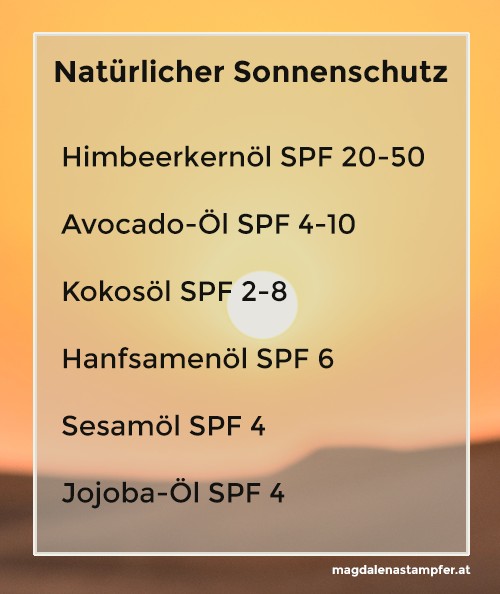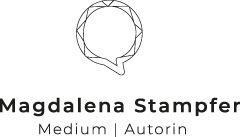Summer, sun, sunscreen...?
We should probably do without the latter if we don’t want to poison ourselves through our skin. Sounds exaggerated? Unfortunately, it’s not, as studies have already shown. We have just become so accustomed to the information drilled into us by advertising and the media that suncreen is essential, that it might sound strange at the beginning to do without!
Sunscreen products often contain toxic chemicals and this mix can unfortunately harm us.
When the strong sunlight affects the chemical mix on our skin, the harmfulness of the substances intensifies even more. On top of that, sunscreen prevents us from producing the vital vitamin D.
Whether it’s hormone balance, thyroid problems, or even neurotoxic effects, sunscreen can do all kinds of harm:
Recent advances on endocrine disrupting effects of UV filters
https://www.ncbi.nlm.nih.gov/pmc/articles/PMC4997468/
Sun lotion chemicals as endocrine disruptors
https://www.ncbi.nlm.nih.gov/pubmed/25885102
Neurotoxic effect of active ingriendients in sunscreen products, a contemporary review.
https://www.sciencedirect.com/science/article/pii/S2214750017300288
Sunscreen does not protect against cancer!
Many people use sunscreen despite the artificial toxins because they are convinced that sunscreen protects them against skin cancer – unfortunately, this is not true, as a large-scale meta-analysis shows:
Use of sunscreen and risk of melanoma and non-melanoma skin cancer: a systematic review and meta-analysis
https://www.ncbi.nlm.nih.gov/pubmed/29620003

The sun is hugely important for our energy and vitamin D levels.
Natural oils as a healthy skin care
When you accustom your skin to sun exposure gradually, you basically don’t need sunscreen at all. If you are still looking for a suitable sunscreen, you can use natural oils – raspberry seed oil leads the list of sunscreen oils because it has the highest protection factor. But for moderate sun exposure, you can also protect yourself with sesame oil, jojoba oil, avodado oil or even coconut oil. The latter is a good idea for vacation anyway: after all, it not only repels mosquitoes, it is also great for skin care, and you can also use it if your skin is irritated after too much sun exposure. And you can use it to make yummy pancakes 😉

Gesunder Sonnenschutz von innen
You can help your body deal with sun exposure also from the inside! There are some great supplements which help the skin adapt to the sun. For example astaxanthin helps the skin protect itself. Another interesting substance is: lycopene (also: leucopin), it helps the body in protecting its cells from sunlight. And it can be found in tomatoes, watermelons, grapefruits and all red fruits. As you can see, everything is ingeniously regulated in nature, because summer is precisely the tomato, cherry and melon season. For those who prefer green to red: broccoli, spinach, parsley, celery and artichokes are particularly recommended for sun protection.
Auszug aus dem Buch ``Allergien (r)evolutionär``
Excerpt from my book „Allergien revolutionär“ (available in German and Polish).
Here is a small excerpt from the chapter “On the skin is under the skin”:
„As consumers, we assume that a product that can be bought in a supermarket or drugstore is alright and has been thoroughly tested for safety. But cosmetics don’t have to be specifically approved.
Since the substances can also potentiate each other and the exact composition often remains in the dark, the testing authorities are often at a loss. The figures of the European Union’s Scientific Committee on Consumer Safety(SCSS) show how lost this is. They show that 2,500 fragrances are used in cosmetics, detergents, perfumes and other household products (not all at once, of course). The SCSS report goes on to say, “Sometimes they can cause skin irritation and allergic reactions.” To protect consumers, it was agreed in the 2013 Allergen Regulation that certain substances must be labeled if they are used. They may be used, but they must be declared. The list of substances requiring labeling includes only 26 items, and the extent of labeling depends on whether the products are to remain on the skin or be rinsed off.
26 out of 2,500, so the regulators are satisfied with a one percent transparency. One percent! The remaining 2,474 substances can be used without labeling. In their “fight” for consumer rights, however, the SCSS really, really tried. The allergenic potential was proven for a further 101 substances and classified as probable for 26. Out of concern for consumers, an immediate reaction was taken and manufacturers got a recommendation to label these substances. A recommendation. This is like: It would be really nice of you, if you could declare these substances, if you find time to do so and feel like it. The cosmetics manufacturers will certainly have taken that to heart.” [M. Stampfer, Allergien revolutionär, 3rd ed. 2019]


